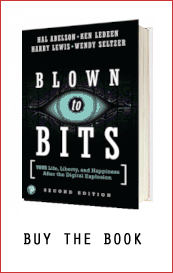Excerpts from Chapter 3: Ghosts in the Machine‚ Secrets and Surprises of Electronic Documents
What You See Is Not What the Computer Knows … Representation, Reality, and Illusion … Hiding Information in Images … The Scary Secrets of Old Disks
In October, 2005, UN prosecutor Detlev Mehlis released to the media a report on the assassination of former Lebanese Prime Minister Rafik Hariri. Syria had been suspected of engineering the killing, but Syrian President Bashar al-Assad denied any involvement. The report was not final, Mehlis said, but there was evidence of both Lebanese and Syrian involvement. Deleted, and yet uncovered by the reporters who were given the document, was an incendiary claim: that Assad‚ brother Maher, commander of the Republican Guard, was personally involved in the assassination. … The UN prosecutor neglected to remove the change history from his Microsoft Word document, and a reporter discovered the deleted text ….
A few years ago, two MIT researchers bought 158 used disk drives, mostly from eBay, and recovered what data they could. Most of those who put the disks up for sale had made some effort to scrub the data. They had dragged files into the desktop trash can. Some had gone so far as to use the Microsoft Windows FORMAT command, which warns that it will destroy all data on the disk. Yet only 12 of the 158 disk drives had truly been sanitized. Using several methods well within the technical capabilities of today‚ teenagers, the researchers were able to recover … credit card numbers … bank account numbers and account balances …love letters, pornography, complaints about a child‚ cancer therapy, and grievances about pay disputes, for example. Many of the disks contained enough data to identify the primary user of the computer, so that the sensitive information could be tied back to an individual ….

